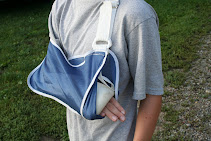In Santa Clarita, California, at least five people lost their lives in a chain car crash on the I-5 Freeway in the Newhall Pass in a rain-related accident.
According to the California Highway Patrol (CHP), the accident which was reported at 12:14 a.m., involved four vehicles. Allegedly, a sedan carrying six people spun out of control and crashed against a pick-up truck, triggering a chain reaction.
The pick-up truck overturned and one of its occupants died. The sedan however, yielded a higher body count with one 6-year old, three young people and an adult. Two people in the sedan survived and were brought to the hospital. Fortunately, there were no other people injured from the other vehicles involved in the crash.
Driving under hazardous conditions can be just as dangerous as driving under the influence. Even if a driver is not impaired by drugs or alcohol, wet roads (due to rain or snow) are an easy trigger for an accident, especially if the driver may be driving too fast or would make a sudden sharp turn.
Also, rain or snow can also impair visibility. In case of a heavy downpour, drivers are advised to turn on their headlights and use extreme caution when driving.
In case of adverse weather conditions and you can’t avoid having to drive, observe the Basic Speed Law. The Basic Speed Law, which is embodied under Vehicle Code Section 38305 provides that, “No person shall drive an off-highway motor vehicle at a speed greater than is reasonable or prudent and in no event at a speed which endangers the safety of other persons or property.”
This means that even if the speed limit is 55 but because the road is slippery because of the rain, the driver must drive at a lower speed. Ideally, 10 mph lower than the prescribed speed limit would suffice.
However, in case that an accident has already occurred, the weather may not be the only one to blame for any injury or damages suffered. If the driver was operating his vehicle negligently or recklessly, or was driving drunk, or violating traffic laws at the time of the accident, he can be held liable for damages.
A chain car crash however, would change the dynamics of liability as comparative negligence and contributory negligence may be recognized in multi vehicle accidents. In case you’re involved in a chain car crash, it would be best to consult with a car accident attorney. Even if you feel the accident is your fault, the blame may be reduced or divided among the other parties/drivers involved.
According to the California Highway Patrol (CHP), the accident which was reported at 12:14 a.m., involved four vehicles. Allegedly, a sedan carrying six people spun out of control and crashed against a pick-up truck, triggering a chain reaction.
The pick-up truck overturned and one of its occupants died. The sedan however, yielded a higher body count with one 6-year old, three young people and an adult. Two people in the sedan survived and were brought to the hospital. Fortunately, there were no other people injured from the other vehicles involved in the crash.
Driving under hazardous conditions can be just as dangerous as driving under the influence. Even if a driver is not impaired by drugs or alcohol, wet roads (due to rain or snow) are an easy trigger for an accident, especially if the driver may be driving too fast or would make a sudden sharp turn.
Also, rain or snow can also impair visibility. In case of a heavy downpour, drivers are advised to turn on their headlights and use extreme caution when driving.
In case of adverse weather conditions and you can’t avoid having to drive, observe the Basic Speed Law. The Basic Speed Law, which is embodied under Vehicle Code Section 38305 provides that, “No person shall drive an off-highway motor vehicle at a speed greater than is reasonable or prudent and in no event at a speed which endangers the safety of other persons or property.”
This means that even if the speed limit is 55 but because the road is slippery because of the rain, the driver must drive at a lower speed. Ideally, 10 mph lower than the prescribed speed limit would suffice.
However, in case that an accident has already occurred, the weather may not be the only one to blame for any injury or damages suffered. If the driver was operating his vehicle negligently or recklessly, or was driving drunk, or violating traffic laws at the time of the accident, he can be held liable for damages.
A chain car crash however, would change the dynamics of liability as comparative negligence and contributory negligence may be recognized in multi vehicle accidents. In case you’re involved in a chain car crash, it would be best to consult with a car accident attorney. Even if you feel the accident is your fault, the blame may be reduced or divided among the other parties/drivers involved.



